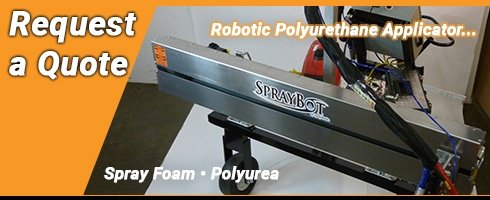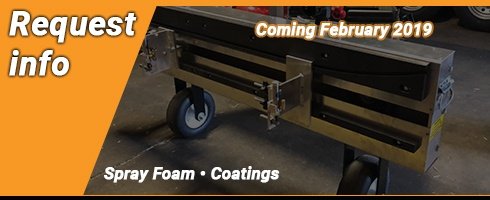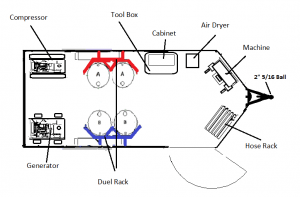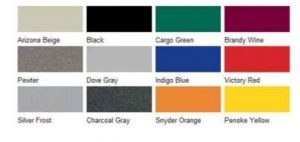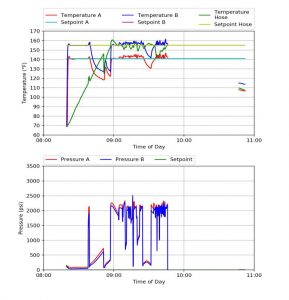Spray foam is an essential addition to the operations of many industries, and one option that SprayWorks Equipment can supply our customers with is spray polyurethane foam, also known as SPF.
Read on to learn more about SPF roof foam and other options from SprayWorks Equipment, our products, and everything we can do for you as your supplier of choice.
What Exactly Is SPF Foam?
As industry experts know, spray polyurethane foam is a type of insulation material most commonly used in building and construction projects. SPF roof foam is usually created by mixing and spraying polyol resin and isocyanate to form a chemical reaction that results in a foam-like substance. From there, it can be applied to walls, roofs, and more for your individual or industry-related needs.
How to Apply Spray Polyurethane Foam
Once creating your SPF roof foam, you can apply the mixture to designated surfaces with a spray foam gun. Depending on the consistency of your SPF foam, different spray gun tips may be required, and SprayWorks Equipment offers products with interchangeable tips in order to accommodate your applications. Once this is determined, apply the foam as needed.
After applying your SPF foam, expansion and curing follows. Keep in mind the curing process can vary depending on both the environmental factors and the type of spray polyurethane foam that you are using.
Finally, once your SPF roof foam has finished curing, simply trim any excess foam to achieve a smooth and even finish that will fit properly into your application.
The Importance of SPF Foam
SPF foam operates as a spray-applied material that is used to boost energy efficiency and comfort within a variety of spaces in buildings, due to its ability to provide effective insulation, blocking off any cracks and holes. Its capabilities can also be used to provide a moisture barrier, seal out unwanted drafts of air, and ensure complete thermal insulation in residential, commercial, and industrial buildings.
SPF Foam for Open-Cell and Closed-Cell Applications
There are two primary types of spray polyurethane foam: open-cell and closed-cell spray foam. Here is what you need to know about each kind before using them in your next project:
- Open-cell SPF foam – With its notably spongy texture and numerous air bubbles, open-cell spray polyurethane foam is the preferable application for those looking for a spray foam that is less heavy-duty. This can include for purposes such as general sound insulation and heat retention.
- Closed-cell SPF foam – As opposed to open-cell spray foam, closed-cell SPF roof foam is more dense and rigid. It also has sealed cells that are known to provide better insulation because of their ability to trap gas, resist outside moisture, and provide structural support to your building.
Overall, both open-cell and closed-cell spray polyurethane foam are designed to satisfy your individual application needs. But if you are looking for a more heavy-duty material for residential and commercial insulation, our team recommends sticking with closed-cell SPF foam.
Our Spray Polyurethane Foam, Polyurea Foam, and Roof System Materials
When you work with SprayWorks Equipment for your spray foam and spray foam equipment needs, you’re choosing industry experts with years of expertise in supplying the best materials. Our SPF foam and other foam options include the following:
- .5 lb open-cell foam
- Deltathane CL 280
- F10E – Fireshell intumescent coating white, 5-gallon pail
- Gaco 052N
- Gaco OnePass CC – set
- Gaco OnePass CC winter – set
- Green Insulation 1 lb foam
- Green Insulation 2 lb foam
- Green Insulation 3 lb foam
- Green Seal 2.5 lb roofing
- Green Seal 2.8 lb regular
- Green Seal 3.0 lb regular
- HandiFoam 12 oz (340g) Handi-Cleaner
- HandiFoam Foam Sealant
- HandiFoam Foam Sealant Fireblock
- HandiFoam Foam Window and Door Sealant
- II-115 HandiFoam high-density SPF (3.1)
- II-205 HandiFoam E84 Class 1 spray foam
- No‐Burn® Plus ThB white
- Polyflex 311 tan
- SWD Quick-Shield 155 2.8 roofing foam
- UPC 0.5 rigid, open-cell polyurethane foam
- UPC 2 lb rigid, closed-cell foam, regular
- Wasser Polyflex WP301
Need SPF Roof Foam? Reach Out to Our Team!
If you’re looking for reliable spray polyurethane foam for your roof or another space, be sure to contact our team today. We can help you assess your needs and find the ideal product for your applications!

